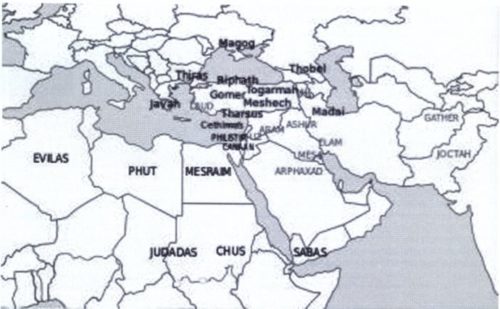DNA LINKS ANCIENT EGYPTIANS WITH BIBLE STORY OF NOAH’S DESCENDANTS
How well do you remember your Bible stories? You might know the many stories of Noah, but a recent discovery by researchers has added a modern twist to the story of Noah’s descendants.
Germany’s University ofTuebingen as well as the Max Planck Institute formed a joint research team to extensively study ancient Egyptian mummies . The researchers have determined that DNA from mummies in Abusir el Meleq, Egypt matches the DNA of people from Anatolia in the Near East (during the Neolithic and Bronze Age periods), as well as people in the Eastern Mediterranean. In other words, the DNA of ancient Egyptian mummies does not match the DNA of modern Egyptian people .
The researchers studied 151 mummies dating from 1388 BCE to 426 CE, obtaining DNA samples from 90 of the mummies. The researchers sampled mitochondrial DNA. The other type of DNA, called nuclear DNA, is typically sampled, but in very old specimens, nuclear DNA is no longer present in the cell. Conversely, mitochondrial DNA comes from another part of the cell outside the nucleus, and is n usually present in very old specimens .
So what does this mean? It likely means that the findings match the Bible’s account in the book of Genesis regarding Noah’s descendants.
In an interview with The Christian Post, the research team said, “We found the ancient Egyptian samples falling distinct from modern Egyptians, and closer towards Near Eastern and European samples. In contrast, modern Egyptians are shifted towards sub Saharan African populations.”
Up until now, the common school of thought was that ancient Egyptians came from northern Africa.
Some historians said the Nubians gave rise to the Egyptians, saying that their tomb paintings were so similar that there had to be a link there. In the 1800s, Professor of Egyptology at the University of London, Flinders Petrie lectured on the Nubian queen Aohmes Nefertari, who he described as the “divine ancestress of the XVlllth dynasty” of pharaohs.
Other scholars of the “Afrocentric” theory claimed that Tutankhamen and his parents and grandparents were black, and have protested the depiction of the young pharaoh’s facial features. Cleopatra was the last pharaoh ruler in Greece’s dynasty in Egypt. Her race has long been a source of frequent debate.
Some say she was black, while others say that it only makes sense that she was Greek and Persian, based on the fact that she descended from the Greek Macedonian family of Ptolemy. Yet it has been speculated that Cleopatra ‘s mother and her half-sister Arsinoe IV were black.
Furthermore, the Great Sphinx of Giza has been described as having a Negroid face. Ancient Egyptians also referred to their homeland as Kmt (modern Kemet) which mainstream scholars translate as “the black place” or “the black land”. The alternate opinion is that it refers to the fertile black soil of the Nile river delta.
In more recent years, what has come to be known in scientific circles as the “black hypothesis” of Egypt has been the subject of profound controversy and disagreement. Many scientists stated that the ancient Egyptians were a people indigenous to the Nile Valley. As early as the 1800s, some historians said that the opinion that the Africans gave rise to ancient Egypt is “an error long accepted as the truth.”
Nearly 100 years later, the mummy of Ramses II was amazingly preserved and was taken to France in 1975 for further preservation. Scientists divulged that the mummy had fair skin and wavy red hair.
Genesis 10:5-6 states
“From these the maritime peoples spread out into their territories by their clans within their nations, each with its own language. The sons of Ham: Cush, Egypt, Put and Canaan.”
Ham was the son of Noah, and Ham’s sons spread out and settled these various regions.
Genesis states that Ham’s sons Mizraim and Cush settled in Egypt and Africa, respectively, which means that the Bible says that two distinct, separate nations were formed.
Therefore, the Bible states that early peoples of Egypt actually came from the Near East (Mesopotamia region) and that Ham was their ancestor. The Bible also says these same early Egyptian people were the first Egyptian dynasty – the first pharaohs.
The results confirm what the Bible has said all along. The lead researcher on the study, Johannes Krause, said that the ancient Egyptian mummies they studied indeed looked much more like Near Eastern ancient peoples and had nearly zero sub-Saharan African ancestral linkage. In fact, the DNA analysis suggested that the mummies were more closely related to Europeans than to modern Egyptian people.
Regarding the theory that Africans founded ancient Egypt, the study results suggest that Africans didn’t enter the Egyptian gene pool until the Roman period. Very interesting indeed!


